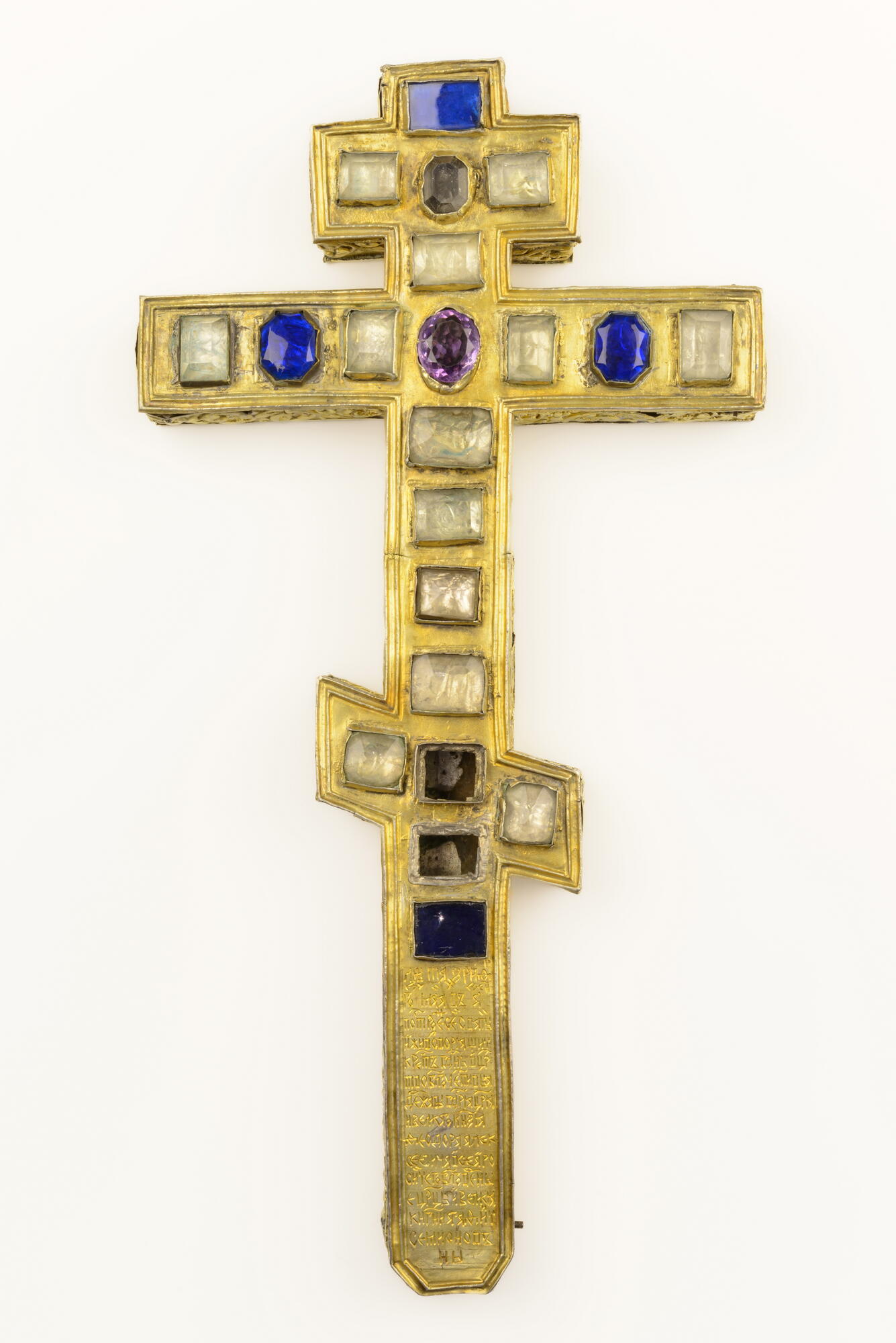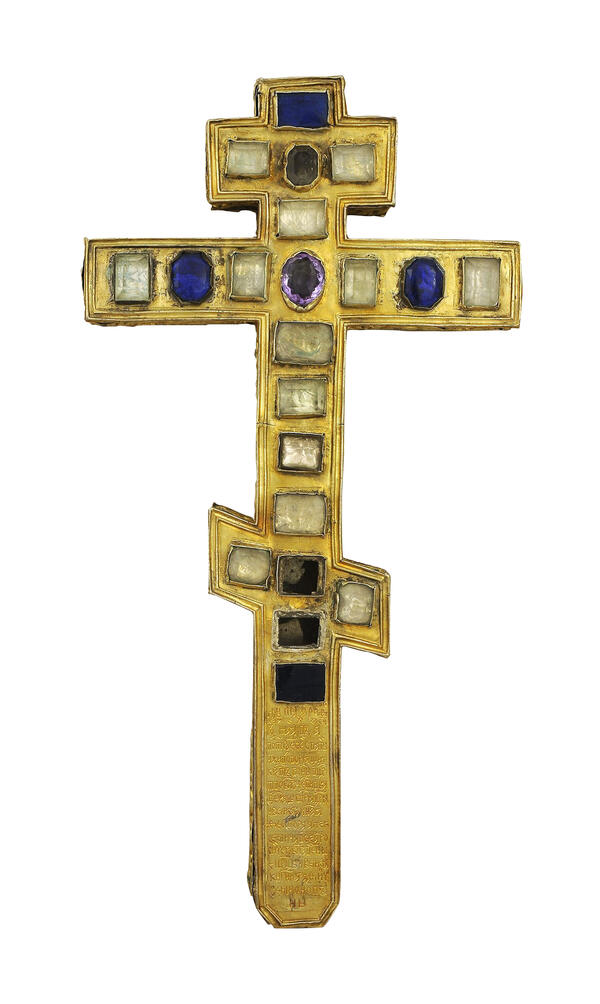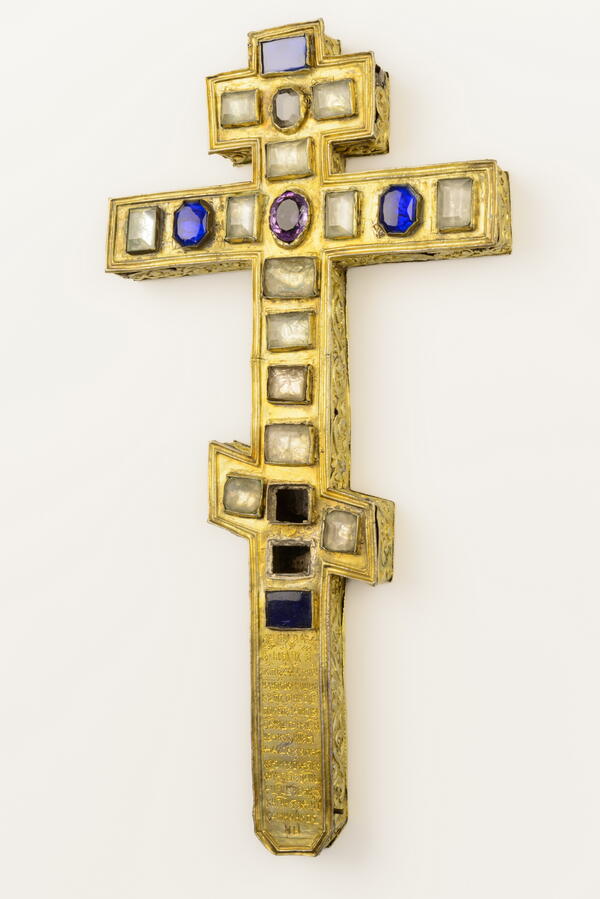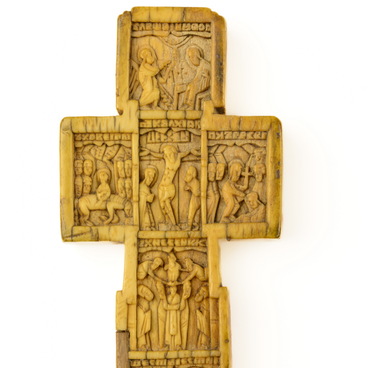A reliquary cross is a special vessel for containing the remains of a revered saint. Such containers were extremely popular in Russia; they could be round, square or cross-shaped, as the work of religious art from the museum’s collection.
This reliquary cross came from the church of Alexander Nevsky in the village of Kurakino, Serdobsky District, Saratov Governorate. The church belonged to the complex of buildings commissioned by Prince Alexander Borisovich Kurakin for his family estate.
Prince Kurakin, who was a magnificent nobleman and the closest friend of Emperor Paul I, rebuilt the Nadezhdino estate and turned it into a luxurious residence. Initially, the cross was located in the house church of the palace, which impressed contemporaries by its size and sophisticated design.
The cross is made of silver using simple techniques and covered with a worn layer of gilding. Its front side is decorated with jewels: the central amethyst is surrounded by inserts made of cut rock crystals, two of which are missing, and blue glass octagons. The side of the cross is a strip with a chased ornament in the form of traditional stylized bindweed.
This reliquary cross came from the church of Alexander Nevsky in the village of Kurakino, Serdobsky District, Saratov Governorate. The church belonged to the complex of buildings commissioned by Prince Alexander Borisovich Kurakin for his family estate.
Prince Kurakin, who was a magnificent nobleman and the closest friend of Emperor Paul I, rebuilt the Nadezhdino estate and turned it into a luxurious residence. Initially, the cross was located in the house church of the palace, which impressed contemporaries by its size and sophisticated design.
The cross is made of silver using simple techniques and covered with a worn layer of gilding. Its front side is decorated with jewels: the central amethyst is surrounded by inserts made of cut rock crystals, two of which are missing, and blue glass octagons. The side of the cross is a strip with a chased ornament in the form of traditional stylized bindweed.




